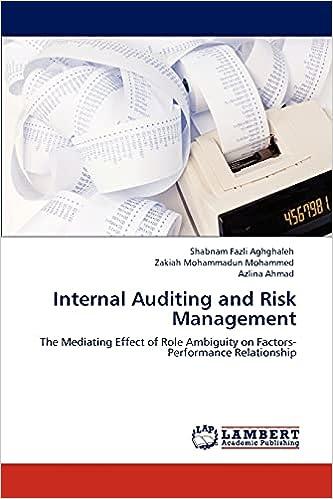Answered step by step
Verified Expert Solution
Question
1 Approved Answer
Which of the following is an advantage of using a perpetual inventory system compared to a periodic inventory system? 1) Interim reports about income and









Which of the following is an advantage of using a perpetual inventory system compared to a periodic inventory system? 1) Interim reports about income and expenses can be undertaken without the need to perform a stocktake. 2) The reordering of inventory can be done more efficiently. 3) Managers will have more up-to-date information about inventory during the accounting period, thereby enabling more-informed decisions to be made. 4) All of these choices. Which of the following ratios provides an insight into an organisation's pricing strategy (its 'mark-ups'), which can be compared with those of similar organisations in similar industries? 1) Return on assets 2) Return on owners' equity minion 3) Profit ratio O4) Gross profit ratio A company started the accounting period with accounts payable of $40,000 and ended the accounting period with accounts payable of $35.000. Inventory costing $420,000 was purchased during the period. How much cash was paid to the suppliers of inventory? 1) $420,000 O2) $460.goo 3) $425,000 4) $385,000 The general principle is that a liability does NOT meet the definition and recognition criteria necessary to be recognised as a liability if it has: 1) a low level of measurement uncertainty, a high probability of culminating in an outflow of econgmic benefits; or is as a result of a past event. 2) a high level of measurement uncertainty, a low probability of culminating in an outflow of economic benefits; or is contingent upon the occurrence of a future event. a low level of measurement uncertainty, a high probability of culminating in an outflow of economic benefits; or is contingent upon the occurrence of a future event. O 4) a high level of measurement uncertainty, a low probability of culminating in an outflow of economic benefits: or is as a result of a past event. 3) J&J Courier Company buys a second-hand delivery truck for the business at a cost of $38,000 by taking out a bank loan over a term of 3 years. What impact will this have on the accounting equation? 1) Liabilities will increase by $38,000. Owner's Equity will decrease by $38,000. O2) Assets will increase by $38,000. Liabilities will increase by $38,000. Owner's Equity will remain the same. The $38,000 will be evenly split between assets and liabilities. Assets will 3) increase by $19,000. Liabilities will increase by $19,000. Owner's Equity will remain the same. There will be no impact on the accounting equation since the delivery van was purchased second-hand. 4) Which of the following statement is TRUE in relation to special purpose financial statement (SPFS's)? 1) Special purpose financial statement (SPFS's) are financial statements intended for users of financial information who are unable to command the preparation of statements tailored to their specific information needs. 2) Special purpose financial statement (SPFS's) need to comply with accounting standards. 3) Referring to the financial statements as 'special purpose financial statements' (SPFS's), signals that they comply with the accounting standards and other disclosure requirements typically required of larger organisations. 4) Smaller organisations, with a relatively low level of separation of owners and managers, will generally issue special purpose financial statement (SPFS's). Which of the following statements is TRUE in relation to the presentation of the income statement? 1) Larger organisations that are required to comply with accounting standards, have no choice about how they present their income statements. 2) If an organisation presents its expenses based on the function-of-expenses approach, then expenses will be classified according to their nature. 3) Allocating costs to functions may require arbitrary allocations and involve considerable judgement. Larger organisations might tend to show more details about specific expenses, whereas smaller organisations tend to aggregate many of their expenses. 4) Which of the following statements is FALSE in relation to the statement of changes in equity? 1) The statement provides a reconciliation of opening and closing equity. O2) The statement provides details of the various income and expense accounts that are impacted on by the period's total comprehensive income 3) The statement shows why and how the equity accounts presented within the balance sheets have changed from one accounting period to the next. O4) None of these choices. Which of the following is NOT a component of the definition of a liability? 1) A liability represents a legal obligation of an entity. 2) It arises from past events. 03) It results in an outflow from the entity of resources embodying economic benefit 4) None of these choices
Step by Step Solution
There are 3 Steps involved in it
Step: 1

Get Instant Access to Expert-Tailored Solutions
See step-by-step solutions with expert insights and AI powered tools for academic success
Step: 2

Step: 3

Ace Your Homework with AI
Get the answers you need in no time with our AI-driven, step-by-step assistance
Get Started


